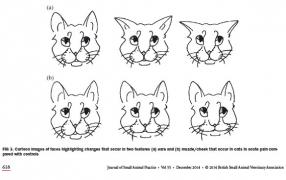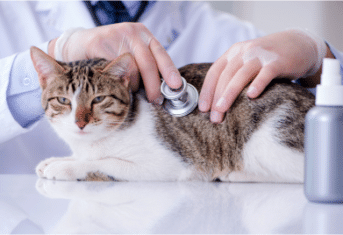Can You Recognize Pain in Your Cat?

Can You Recognize Pain in Your Cat?
At least every day, if not more often, I am asked by a worried cat family, “Is my cat in pain?” This is probably a more difficult question for me to answer than the other one I hear every day, “Why did my cat get cancer?”
Signs of Pain
Many of the current recommendations to identifying pain in pets are based on behavioral changes. Reluctance to jump, walk or move in general can be a sign of pain, as is the more obvious limping. I worry about pain in my feline patients when a cat with a robust appetite suddenly does not lobby for 40 Temptations™ on a daily basis. Changes in posture and sleep can signify pain. Veterinarians interpret a cat snoozing in a curled up position as non-painful and a wide awake stretched out cat as a painful one.
Pain Guidelines
The World Small Animal Veterinary Association Global Pain Council, an international panel of pain management experts has also developed a series of guidelines for veterinary practitioners. There is also a scientifically validated pain scale for cats, in both Brazilian Portuguese and English. This scale is designed to give similar results between different observers helping veterinarians everywhere to take better care of cats. These guidelines help us to recognize, assess and treat pain. But they don’t help cat owners much since they are designed to be used by medical professionals.
Your Cat’s Face May Have the Answer
A recently published study from the Journal of Small Animal Practice studied the facial expressions of painful cats. The veterinary researchers at the School of Veterinary Medicine at the University of Glasgow, Scotland, measured distances between various facial landmarks on photographs of painful cats. Analysis of the measurements determined changes in ear position and mouth distance were the best predictors of pain. They then used the information to make a graphic of cat faces that could be used to accurately identify painful cats. The graphic is the cute cat faces illustrating this blog. Although more work is necessary to validate the utility of the cat face graphic, ultimately, the system of pain assessment could become a very simple method of assessing pain in your cat.
Concerned your cat is painful? Check with your veterinarian. Sometimes veterinarian’s trial a cat on pain medication as a way to identify painful cats and put them back on the road to good health.
Image: Journal of Small Animal Practice, December 2014

































